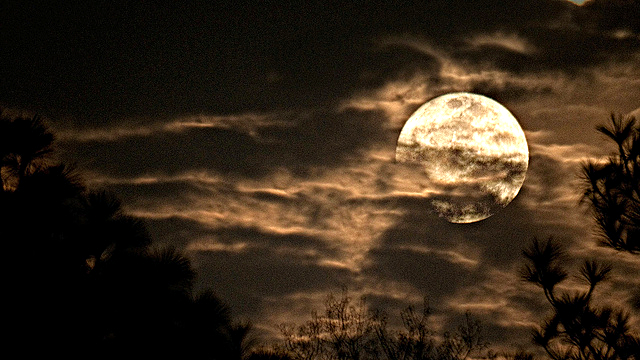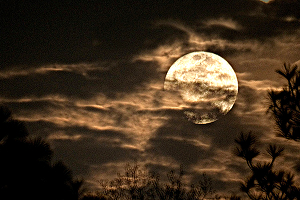
This weekend’s supermoon. Photo: DelosJ.
Did you see the supermoon through this weekend’s cloudy skies? The supermoon is a full moon that appears to loom super large and super bright in the sky, because the earth and moon are as close together as they get. The moon’s orbit is shaped like an ellipse, and on March 19th, the moon was at the point in its orbit that is closest to the earth—this is called perigee. It is rare that perigee and a full moon happen at the same time. The last time this occurred was in 1993. Because of its rarity and celestial nature, the supermoon gets blamed for things that cannot possibly be its fault—a higher influx of patients to emergency rooms, weird animal behavior, and even last week’s earthquake and tsunami. None of these can be attributed to the supermoon. But the standard moon does have some important effects on earth’s biota.
Many species, particularly those living in the ocean, are tied to the phases of the moon. Corals spawn during the full moon, which may be advantageous because if all the corals release their gametes into the water at the same time, the chances of fertilization are higher. Similarly, seaweeds spawn synchronously, in step with the moon’s phases. Intertidal species may be particularly affected by the moon’s phases, because of the moon’s influence on the tides. The highest high tides and the lowest low tides occur during the new and full moon. (Tides are especially high during supermoons.) Many species of crabs release their larvae during the new and full moon. It is thought this timing may help the larvae, because it coincides with large tidal variation, which could bring larvae to the ocean quickly. Larvae would spend minimal time under inhospitable conditions.
Fishes also reproduce in time with the moon. There are several hypotheses about why this happens. Predation on fish eggs may be reduced during high tides. Or the adult fish may be responding to availability of food, which could be influenced by the moon. Or, the fishes’ reproductive hormones may be directly affected by the light patterns associated with the phases of the moon.
